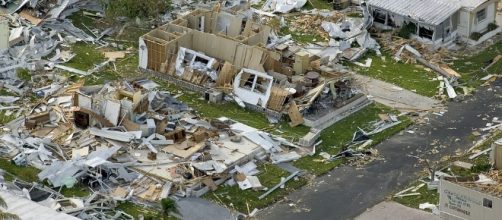Thousands of Caribbean residents are waking up on Thursday to shocking scenes, caused by the deadliest Hurricane to ever form in the Atlantic.
Total devastation
Irma literally smashed Barbuda to bits, with Prime Minister, Gaston Browne, estimating that $100 million will be needed to rebuild. One child was killed. Approximately 95 percent of structures were badly damaged or entirely reduced to rubble. Barbuda is home to less than 2,000 people.
The devastation is also evident in the Franco-Dutch island of Saint Martin. Officials say boats were wrecked and tossed onto each other in the marina, while streets were submerged and most telecommunications systems downed.
Several homes have been flooded and nearly all of the island is unrecognizable. French Interior Minister, Gerard Collomb, said the death toll is expected to rise. There have been eight fatalities confirmed so far. Saint Martin's airport, the third largest in the Caribbean, has been destroyed.
On Thursday morning, Irma hit Puerto Rico swamping its capital San Juan with rain and bringing winds that scattered tree limbs across roadways. At least half of Puerto Rico’s homes and businesses are without power and officials say it may be that way for the next few days.
Help from the UK is on the way
The area worst hit by Irma so far, includes a number of British overseas territories, among them the British Virgin Islands (BVI) and Anguilla.
Britons were warned by the UK Foreign Office to evacuate as Irma approached, but as airlines were forced to ground or divert flights, many expats and tourists were left stranded. The UK's Foreign Secretary Boris Johnson confirmed on Thursday that help is coming, in the form of a naval vessel with a relief team, including 40 Royal Marines and Army engineers. The British territory of Turks and Caicos, which has a population of 31,500, is still at risk and is expected to start feeling the effects of Irma by Thursday evening. The southeastern Bahamas should also experience some adverse effects at that time.
Hurricane Irma remains a powerful Category 5 hurricane with sustained winds of 180 mph and wind gusts reaching 220 mph.
It is moving west-northwest at 17 mph and is expected to make landfall in Florida by the weekend. The National Hurricane Center warns that its winds will likely be felt late Saturday into Sunday. Rainfall of five inches or more is projected to fall across southwest Florida by Monday. Authorities are urging everyone from Florida's Gulf coast to Carolina to take this Hurricane seriously and to continue stocking up on necessities.
Two other Hurricanes, Jose, and Katia, are also causing concern but it is yet too early to predict what type of damage they will bring. Forecasters say that Jose will pass close to the Leeward islands and may hit areas already devastated by Irma. Katia, which formed in the Gulf of Mexico, is expected to hit the Mexican state of Veracruz. Heavy rain is likely, along with the possibility of mudslides.


